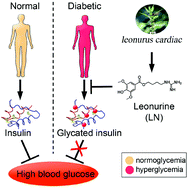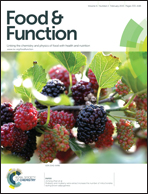Inhibitory effect of leonurine on the formation of advanced glycation end products
Abstract
Long-term hyperglycemia is a typical symptom of diabetes mellitus (DM) which can cause a high level of protein glycation and lead to the formation of advanced glycation end products (AGEs). The accumulation of AGEs in turn deteriorates DM and its complications. Insulin, the only hormone that directly decreases blood sugar in vivo, is vulnerable to glycation which causes the loss of its biological activity. In this study, we used a porcine insulin (PI)–methylglyoxal (MGO) model to investigate the inhibitory effect of leonurine (LN), a natural alkaloid extracted from Herba leonuri, on AGE formation. Assays including AGE-specific fluorescence, and fructosamine level and carbonyl group content determination showed that LN can dose-dependently suppress PI glycation. A significantly decreased cross-linking level on the glycated PI was also proven by SDS-PAGE electrophoresis. A further liquid chromatography-mass spectrometry study suggested that LN may inhibit PI glycation through trapping MGO and keeping it from reacting with PI. Our results thus indicate that LN is a promising anti-glycation agent for the prevention of diabetes and its complications via inhibiting AGE formation.


 Please wait while we load your content...
Please wait while we load your content...